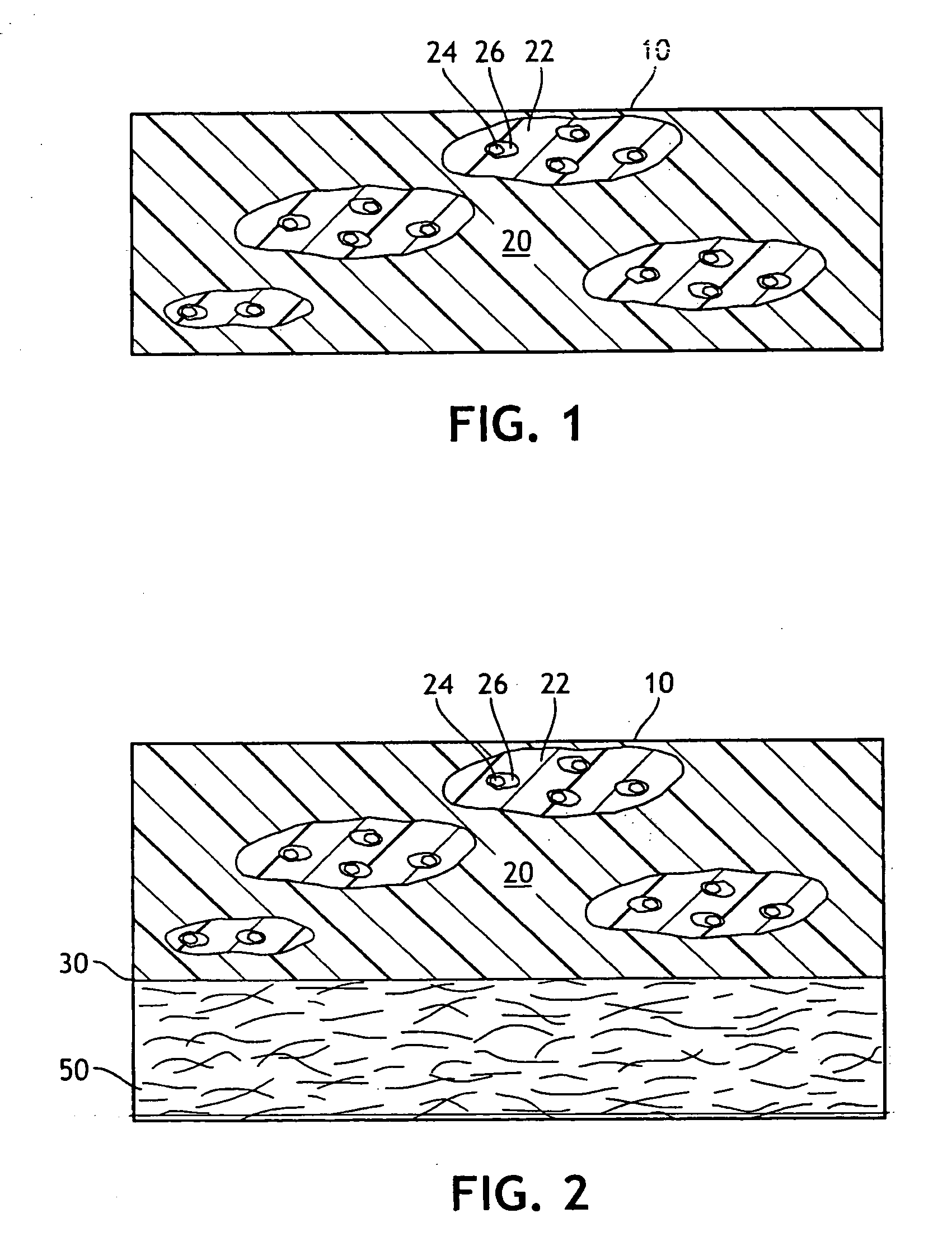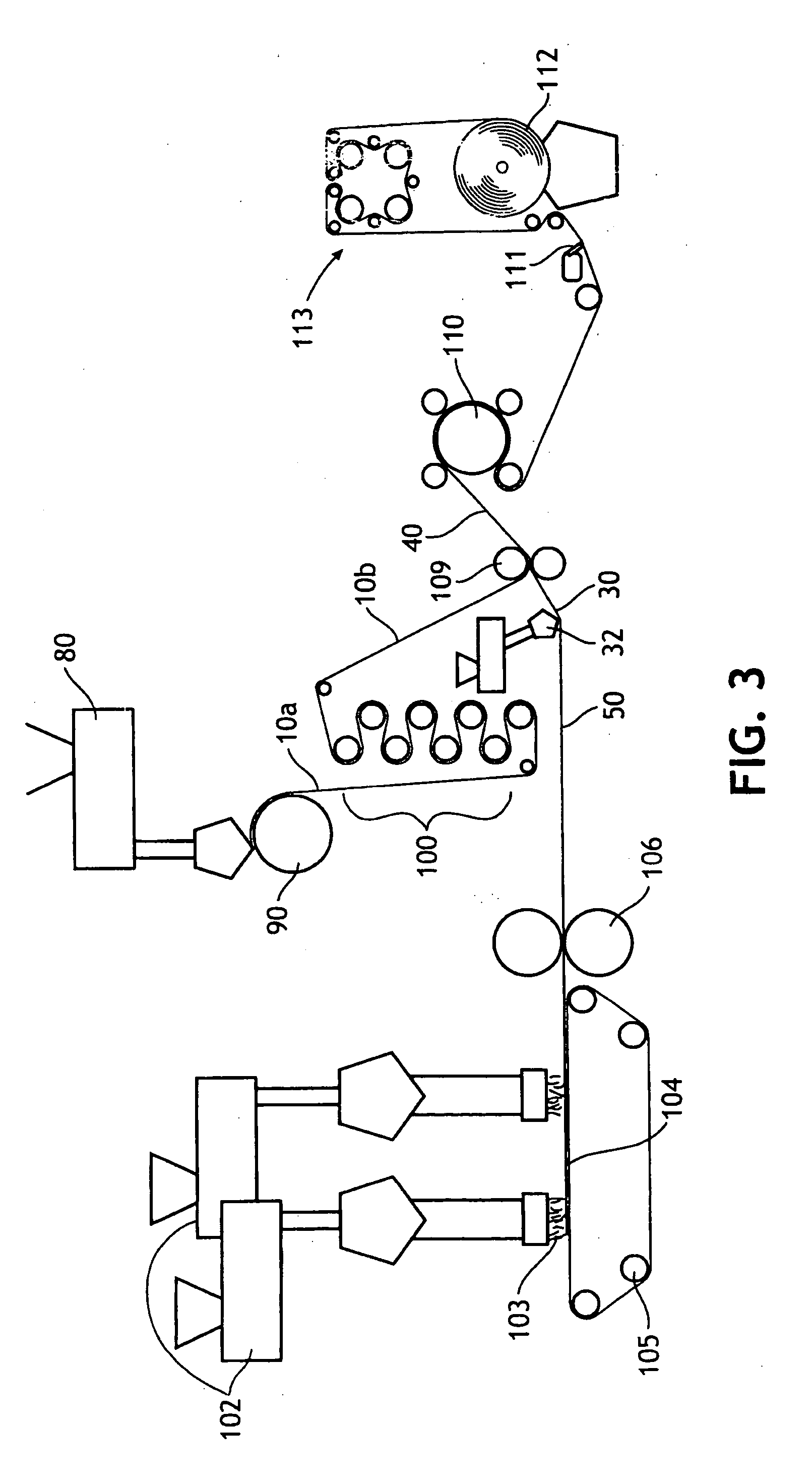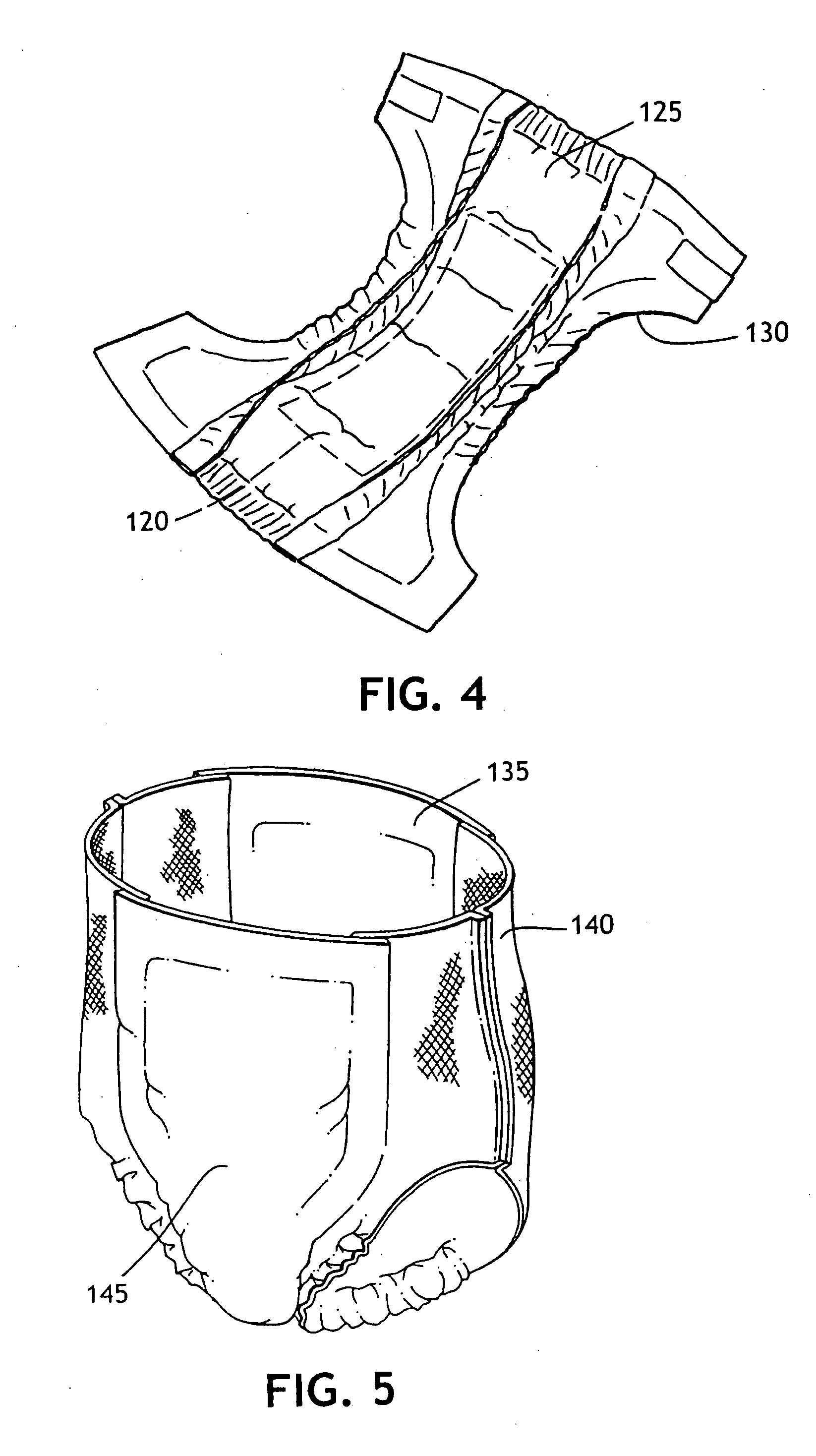Microporous breathable elastic films, methods of making same, and limited use or disposable product applications
a technology of elastic film and microporous material, which is applied in the field of elastic film, can solve the problems of affecting the breathability of the product, affecting the use of the product, and affecting the use of the product, and achieves the effect of greater breathability
- Summary
- Abstract
- Description
- Claims
- Application Information
AI Technical Summary
Benefits of technology
Problems solved by technology
Method used
Image
Examples
example 1
In Example 1 an inventive film was produced. The film layer contained calcium carbonate filler dispersed in a carrier resin. The calcium carbonate, was available from OMYA, Inc., North America of Proctor, Vt. under the designation OMYACARB® 2 SS T and had an average particle size of 2 micron, top cut of 8-10 microns and about 1% stearic acid coating. The calcium carbonate (75%) filler and carrier resin (25%), Dowlex 2517 LLDPE (melt index of 25 and density of 0.917) formed the filler concentrate compound that was then blended in a single screw conventional extruder with 33% of Septon 2004 SEPS triblock thermoplastic elastomer letdown resin to provide a final calcium carbonate concentration of 50.25% by weight. The Dowlex® polymer is available from Dow Chemical U.S.A. of Midland, Mich. The Septon polymer is available from Septon Company of America of Pasadena, Tex.
This formulation was formed into a film by casting onto a chill roll set to 104° F. at an unstretched basis weight of ...
example 2
In Example 2, a film similar to the film of Example 1, but with 30% of Septon 2004 SEPS triblock thermoplastic elastomer letdown resin was formulated to provide a final calcium carbonate filler concentration of 52.5% by weight.
This formulation was formed into a film by casting onto a chill roll set to 99° F. at an unstretched basis weight of 64.4 gsm. The film was stretched 3.6 times its original length using a machine direction orienter (MDO), then retracted 15% to a stretched basis weight of 30.6 gsm. The film was heated to a temperature of 125° F. and was run through the MDO at a line speed of 472 feet per minute to provide the desired level of stretch. The film was then annealed at temperatures of between 160-200° F. across multiple rolls.
example 3
In Example 3 a film similar to the film of Example 1 was formulated, but with 40% of Septon 2004 SEPS triblock thermoplastic elastomer letdown resin, to provide a final calcium carbonate filler concentration of 45% by weight.
This formulation was formed into a film by casting onto a chill roll set to 99° F. at an unstretched basis weight of 51 gsm. The film was stretched 3.6 times its original length using a machine direction orienter (MDO) to a stretched basis weight of 40 gsm. The film was heated to a temperature of 125° F. and was run through the MDO at a line speed of 450 feet per minute to provide the desired stretch. The film was then annealed at a temperature of 180° F. across multiple rolls. A laminate made with this film will demonstrate both MD / CD stretch.
PUM
| Property | Measurement | Unit |
|---|---|---|
| Fraction | aaaaa | aaaaa |
| Fraction | aaaaa | aaaaa |
| Fraction | aaaaa | aaaaa |
Abstract
Description
Claims
Application Information
 Login to View More
Login to View More - R&D
- Intellectual Property
- Life Sciences
- Materials
- Tech Scout
- Unparalleled Data Quality
- Higher Quality Content
- 60% Fewer Hallucinations
Browse by: Latest US Patents, China's latest patents, Technical Efficacy Thesaurus, Application Domain, Technology Topic, Popular Technical Reports.
© 2025 PatSnap. All rights reserved.Legal|Privacy policy|Modern Slavery Act Transparency Statement|Sitemap|About US| Contact US: help@patsnap.com



